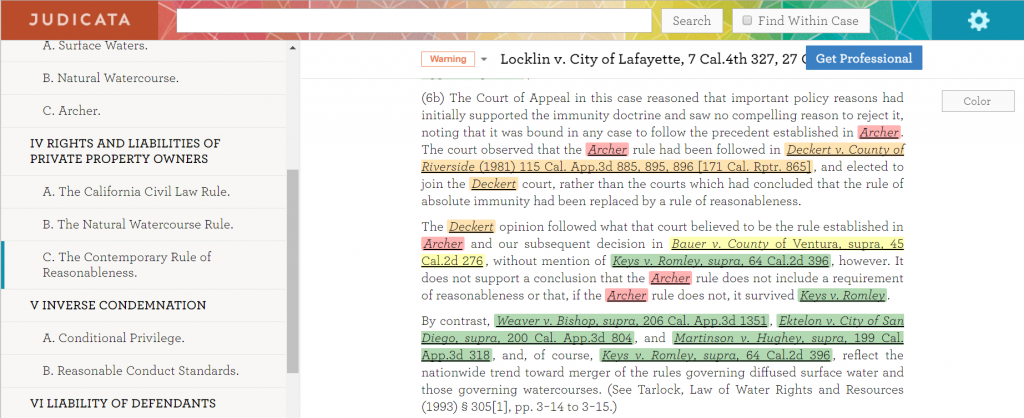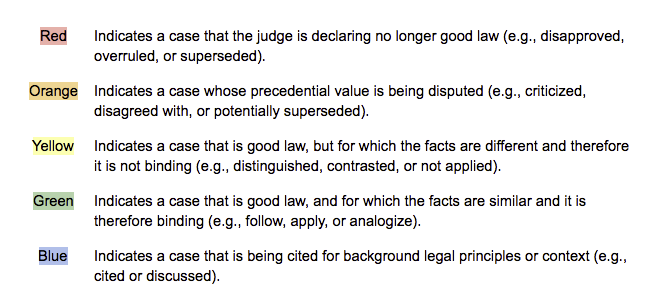Last month, I wrote about Judicata, a legal research that had just emerged into public view after five years of development in stealth mode. With $8 million in backing from some big-name investors, including PayPal cofounder Peter Thiel and Box founders Aaron Levie and Dylan Smith, Judicata aims to deliver a legal research platform that is “unprecedented in its precision, relevancy and simplicity.”
One feature I wrote about then but that was not yet generally available to users is color coding of citations within a case. I really liked the preview I had of this feature, because the colors provide a visual cue of what is going on in the case and enhance reading and comprehension.
Today, Judicata released this feature to general availability and it will be available for many of the most-viewed and most-important cases, but not yet all cases. The feature can be toggled on or off. Color coding will be available only to paid subscribers. However, Judicata is still not accepting direct sign-ups. Those interested in becoming a user must request access through the Judicata website.
With color coding, every case citation within an opinion is color coded based on how the opinion treats the cited case. What you see looks like this:

What those colors mean are explained here:

Judicata CEO and cofounder Itai Gurari told me that he believes that color coding speeds reading of cases by as much as four times and that comprehension “goes off the charts.” Unlike other research services, the color codes show not only negative citation treatments, but also positive ones, he said.
In a blog post today introducing this new feature, Judicata outlined how color coding can help readers see key patterns in cases, such as:
- The applicable law: A section containing several blue highlights indicates a discussion of the applicable law.
- The split: Contrasted green and orange citations often indicate a court split, with the current decision following the rule of the green case.
- Resolving The Split: Contrasted green and red citations may indicate a resolution to a lower court split, with the current decision adopting the rule of the green case while dismissing the rule of the red case.
- The factual distinction: Contrasted green and yellow citations generally indicate a factual difference between the cases, where the green case is the one that is more similar to the current decision.
- The mistaken reliance: Contrasted red and yellow citations often indicate a legal error, where the red case mistakenly relied upon the yellow case.
Why hasn’t this been done before? Turns out, a lot of both people power and computing power goes into the color-coding process. Judicata’s blog post goes into detail about how the color coding is done. It’s worth a read.
 Robert Ambrogi Blog
Robert Ambrogi Blog